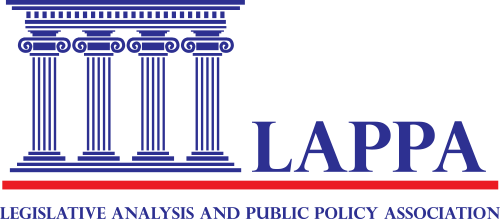Pill Press Laws in the United States
View a map of Pill Press Laws in the United States...

View a map of Pill Press Laws in the United States...
The COVID-19 pandemic created an unprecedented public health emergency throughout the world, prompting providers to turn to telehealth to provide necessary health care to patients at a distance. This paper analyzes the current state of telehealth services at the federal and state levels, as well as the benefits and limitations of telehealth technology use. It also offers public policy recommendations to improve telehealth services in the United States....
Overdose Fatality Review Teams (OFR) can help states and local jurisdictions determine what factors and characteristics may lead to a possible overdose. This fact sheet explains the origins of OFR and summarizes efforts, throughout the United States, to establish and operate OFR teams....
The restaurant industry has been particularly impacted by the opioid epidemic with, for example, ten percent of food service workers dying from opioid overdoses in the State of Delaware.[1] This sobering statistic prompted the Delaware Division of Public Health (DPH) to launch the Restaurant Accolade Program (the Program), which trains all restaurant staff and owners in the state on how to identify, respond to, and reverse an opioid overdose and helps food establishments draft policies that support employees and patrons with substance use disorders (SUDs). The Office of Health Crisis Response (OCHR) within DPH conducts the training and education....
This Fact Sheet describes the current status of Good Samaritan Fatal Overdose Prevention Laws throughout the United States as well as findings from interviews with state drug control officials concerning the application and effectiveness of those laws....
This Fact Sheet provides readers with an overview of what naloxone is and a brief overview of naloxone access law across the United States....
In September 2021, Georgetown University Law Center convened an Opioid Litigation Summit. This convening brought together numerous experts to discuss legal, administrative, and programmatic strategies needed to optimize the impact of proceeds from the opioid litigation. The themes described in this brief emerged from the Summit and can be applied to the opioid litigation as well as future mass tort litigation to address public health crises....
When Pennsylvania Attorney General Josh Shapiro learned that approximately 15 citizens of the Commonwealth of Pennsylvania die each day from an overdose, he took action. As a result, in May of 2018, he launched the Law Enforcement Treatment Initiative (LETI) to connect individuals suffering with a substance use disorder (SUD) to treatment resources....
The Model Law Enforcement and Other First Responder Deflection Act, drafted in collaboration with the Police, Treatment, and Community Collaborative (PTACC), encourages the use and establishment of deflection programs on the state level. Specifically, the model act (1) authorizes law enforcement and other first responders to develop and implement collaborative deflection programs that provide proactive policing to assist individuals who are at risk; (2) offers pathways to treatment, recovery services, housing, medication for addiction treatment, whole family services, and other needed supports; (3) requires deflection programs to have certain threshold elements to be eligible to receive grant funding; and (4) requires agencies establishing deflection programs to develop comprehensive memoranda of understanding in conjunction with, and agreed to by, all deflection program partners....
“Stigma” is defined as stereotypes or negative views attributed to a person or groups of people whose characteristics or behaviors are viewed as different from, or inferior to, societal norms. Surveys of public attitudes about various stigmatizing conditions indicate that individuals with a substance use disorder are viewed more negatively than individuals with a mental disorder. This report, released in collaboration with Rulo Strategies LLC, explores efforts to reduce stigma towards individuals with a substance use disorder in public safety and justice settings....


